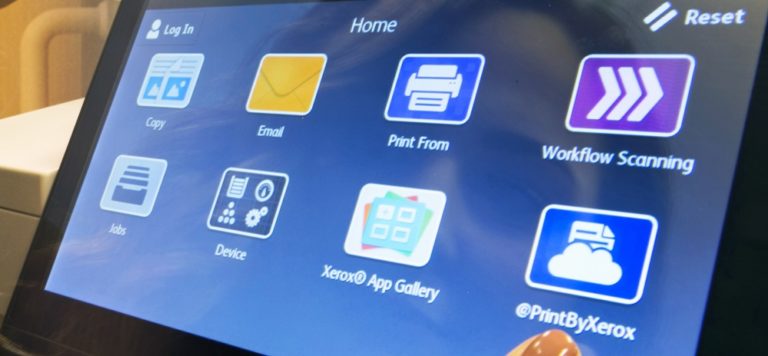By Justin Milligan

(From the editor: This article was originally published on a blog owned by Xenith Document Systems. Xenith is a Xerox platinum partner in the United Kingdom that provides managed print services in the United Kingdom, Europe, and beyond.)
For IT leaders everywhere, big data is the hot topic of the day. But as with most hot topics, it’s been positioned as an imperative – something we must all make use of, simply because we can.
But what are the real business benefits of big data? What problems does it actually solve? Why is it so important?
In this post, we will look at a number of real-life examples that demonstrate the practical business benefits of big data.
What is Big Data?
All IT networks handle data. Sales information, customer records, customer service notes – everything your business needs to run. Big data refers to the same sort of data your business currently uses, on a far larger scale – petabytes of data containing trillions of records from billions of customers, updated every second. This is too much data to sift through using traditional methods, but by analyzing that data, it can be applied to planning and forecasting, with dramatic results.
That’s the business benefit of big data – if you can harness it, you’ll be able to improve your company’s operations by generating smart, strategic insights, and making incisive decisions based on accurate, up-to-the-minute evidence.
Takeaways:
More than a buzzword. Big data can add significant value to business strategy and operations.
Analyze petabytes of data. Reduce the trial and error element of your business strategies.
Gain a competitive advantage. Your businesses are real, and big data is an innovative way to solve them.
The Solution is Clear – What About the Problems?
Once you understand what it does, it’s easy to see why big data is being touted as a solution, but the problems it solves might not be readily apparent – until you see how other organizations are already using big data to solve problems their competitors aren’t even aware of.
The following examples will show you some of the business applications of big data today:
Global Legislation Compliance – EY: Even as it becomes easier to operate in multiple countries, it’s becoming harder to keep track of privacy legislation. EY is now taking a big data approach to monitoring global privacy legislation. By collecting and analyzing data on privacy definition, regulations and incidents in specific industries across Europe, North America and Asia, EY helps clients avoid costly privacy incidents across their territories.
IT Infrastructure Expansion – Netflix: Video streaming is one of the most demanding, resource-intensive processes that IT infrastructure has to handle, especially for a company that serves millions of customers all around the world. Netflix’s expansion and success has been driven by big data – which allows them to allocate their cloud-based resources, examine customer viewing trends and provide recommendations to a disparate group of users. The outcome is more eyes on screens, allowing the company to steadily grow its subscriber base and the infrastructure that supports it.
System Testing – KPMG Insights Labs: Imagine being able to learn from hundreds of other businesses’ mistakes and successes at a glance. That’s what the data-driven solutions testing center at KPMG Insights Labs does. Cutting out costly iterations of trial and error, IT teams are able to test out their new solutions using genuine, accurate data taken from a range of sectors – including financial services, telecommunications and retail – to see how their system will cope in different conditions. The strategic benefits are clear – IT leaders using the facilities of the KPMG Insights Labs can walk into a board meeting with the evidence to back up the business case for their data-driven solution.
Proactive Customer Support – Xenith Document Systems: How much time is lost due to printer maintenance? Many IT departments find themselves “bombarded with calls” about malfunctioning printers. By taking a big data approach to print management data, managed print services provider Xenith now supplies a live graphical dashboard that gives at-a-glance information on printers across multiple floors and sites. Is a particular department wasting more paper than others? Are some devices under-used or over-used? Is a particular device running low on toner? Big data lets them know before recurring issues affect productivity. The dashboard also delivers insights to help optimize the solution. It also gives customers a clear and transparent view of their document infrastructure.
These are just four examples of the benefits of big data as used by successful businesses around the world. The problems that these companies resolve with big data are real – and so are the solutions.
If you enjoyed reading this article you may also like to download Xenith’s eGuide: The Great Post-procurement Challenge – How to Track the Business-wide Benefits of MPS – where we explore how a well-implemented MPS strategy can prove its ROI to the board through analytics and tracking.
Subscribe to this blog and receive email updates when we publish a new article.




That’s an ineillegtnt answer to a difficult question xxx
[…] Is Big Data a Solution in Search of a Problem? (simplifywork.blogs.xerox.com) […]
[…] Is Big Data a Solution in Search of a Problem? […]
big data the management revolution and nice examples of unstructured data https://www.digitaltechnologyreview.com